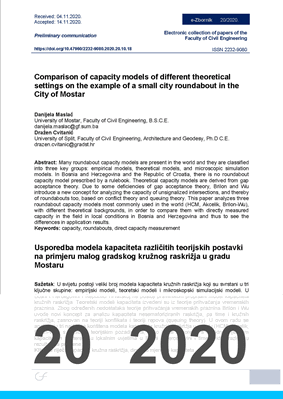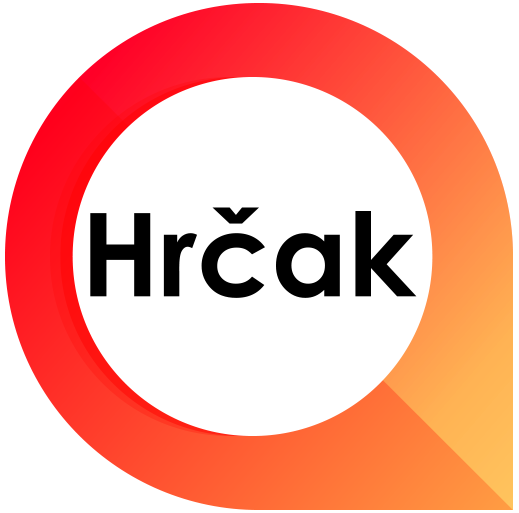ISSN 2232-9080
COMPARISON OF CAPACITY MODELS OF DIFFERENT THEORETICAL SETTINGS ON THE EXAMPLE OF A SMALL CITY ROUNDABOUT IN THE CITY OF MOSTAR
- Issue: No. 20, December 2020, Vol. 10
- Author(s): Danijela Maslać, Dražen Cvitanić
- Type: Preliminary communication
- DOI: https://doi.org/10.47960/2232-9080.2020.20.10.18
Abstract: Many roundabout capacity models are present in the world and they are classified into three key groups: empirical models, theoretical models, and microscopic simulation models. In Bosnia and Herzegovina and the Republic of Croatia, there is no roundabout capacity model prescribed by a rulebook. Theoretical capacity models are derived from gap acceptance theory. Due to some deficiencies of gap acceptance theory, Brilon and Wu introduce a new concept for analyzing the capacity of unsignalized intersections, and thereby of roundabouts too, based on conflict theory and queuing theory. This paper analyzes three roundabout capacity models most commonly used in the world (HCM, Akcelik, Brilon-Wu), with different theoretical backgrounds, in order to compare them with directly measured capacity in the field in local conditions in Bosnia and Herzegovina and thus to see the differences in application results.
Keywords: capacity, roundabouts, direct capacity measurement







